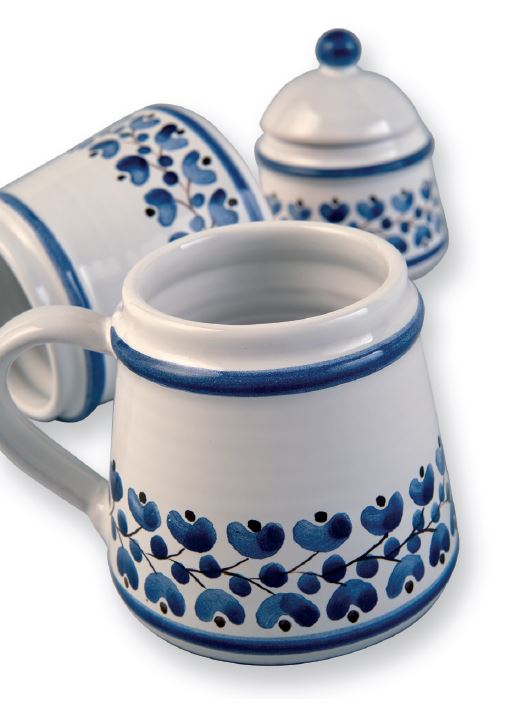Contemporary creative majolic in the western Slovakia
Eva Ševčíková
Production of majolic ceramics emerged with the Haban people who came to the territory of today´s Slovakia in the 16th century. Shapes and decorations of vessels changed with ever-changing economic, cultural and historical conditions. Originally purchased by rich people, the Haban ceramics reached the poorer and transformed into the Slovak folk majolic. Many centres of production emerged, for example in the villages of Boleráz, Dechtice, Košolná, Sobotište, Stupava. Having become the most significant representative of the Slovak majolic art, a workshop in the town of Modra played the most important role in the 20th century. Modra is the centre with the most significant influence on contemporary development, particularly on the establishment of a school of ceramics. To become a skilled majolic maker, one needs to have necessary professional qualification. Graduates of the school in Modra have remained a rather numerous group of producers maintaining the tradition of majolic folk art production.
Now, majolic art is exhibited in the ÚĽUV Gallery in Bratislava. The exhibition seeks to encompass everything that this type of craft represents. In addition, the exhibition presents the main inspirations of majolic art, traditional shapes and decorations, as perceived by contemporary masters. It also describes the impact of the ÚĽUV on the majolic production in the second half of the 20th century. However, some ceramic makers favoured a different style of work than the one used in The Slovak Folk Majolic Modra and, since they could not have worked as sole traders at that time, the only way was to work as sole producers for ÚĽUV. Such producers achieved creative freedom, but faced a very strict products approval procedure. The ÚĽUV promoted products, traditional and modern, bearing the brand of the organisation. Besides, visual artists and producers have produced several special collections emphasizing a new approach to the utility majolic ceramics. Besides, visual artists and producers have produced several special collections emphasizing a new approach to the utility majolic ceramics.
Contemporary majolic ceramics incorporates figural motives. The exhibition presents the artists who have decided for an uneasy way of combining art and craft. Stove tile painting allows a person not to be limited by shape of a vehicle. This type of painting allows wider scopes of shapes and topics, sometimes referring to the naïve painting. Unlike utility stove tiles, stove tile painting represents decorative art. Stove making craft has revived after the events in 1989 in Slovakia, this with help of skilled and experienced ceramic makers.
